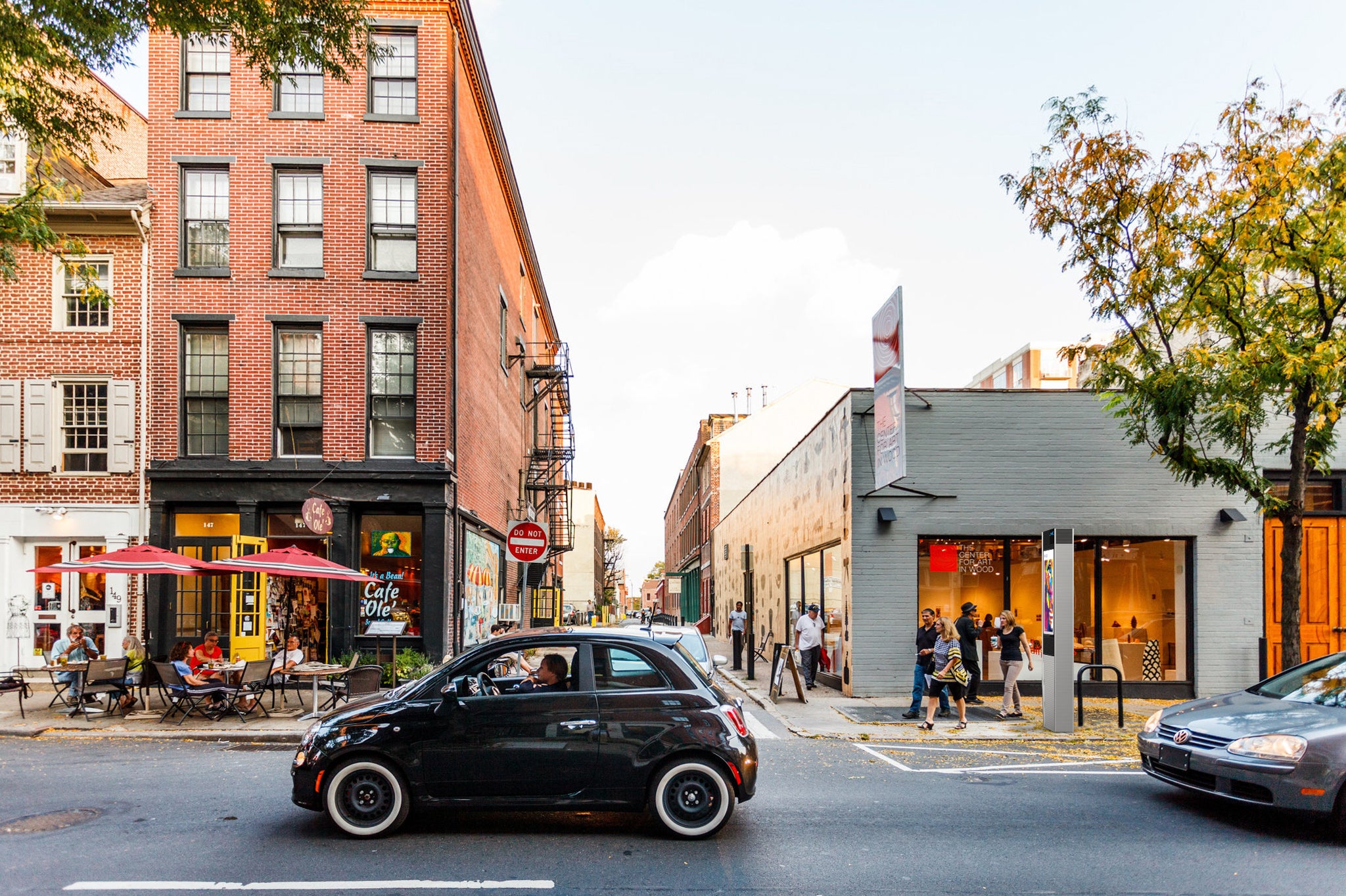Link up: Art Commision OKs plan to install 100 digital ad kiosks along commercial corridors

The Philadelphia Art Commision approved a plan to bring Link kiosks to the city of Philadelphia on Wednesday. The kiosks — roughly the size and shape of the “you are here” type maps common in shopping malls — will feature two large digital ad displays.
In coordination with the city’s Office of Transportation and Infrastructure Systems (OTIS), Intersection, an outdoor advertising firm, will build 100 of the free Wi-Fi providing Link kiosks along the city’s commercial corridors. Eighty kiosks will go in Center City and University City, and 20 will be placed elsewhere, at the discretion of the city. In addition to the ads and Wi-Fi, the Links will feature USB-charging ports and affixed tablets for access to a limited suite of web-based apps, including local maps.
The commission voted seven to one in favor of the proposal. The lone holdout was Joe Laragione, who wanted to limit the approval to a 10 kiosk pilot, in order to get a feel for how the public interacted with them.
Laragione seemed sympathetic to a vocal group of opponents of the bright, digital displays. Three representatives of a local civic association lamented a lack of community outreach in integrating the plan.
Scenic Philadelphia’s Mary Tracy* also delivered an impassioned objection to the kiosks. Tracy, who spoke out against the proposal after conceptual approval from the commission last month,, passed around photos of similar kiosks in New York City that had become loitering spots for homeless people.
Tracy argued that the Links’ stated purpose, of creating seamless Wi-Fi corridors, was disingenuous. “The whole purpose for this is advertising. It’s not about giving internet. I pull up whatever I want, wherever I am,” said Tracy, who views the kiosks as unnecessary clutter. The opponents asked for the Art Commission to table the final vote until Intersection had properly explained the program to their local civic associations. Laragione applauded Tracy as she concluded her speech.
OTIS representatives disputed the notion that public input had been disregarded, noting that this proposal is part of a street furniture contract awarded to Intersection that was approved unanimously by City Council. Christopher Puchalsky, OTIS director of policy and strategic initiatives, also emphasized the importance of free public Wi-Fi.
“We are the poorest large city in America. Over a quarter of our residents live in poverty. A lot of those people can afford smartphones, but the monthly data plan is a burden for many of them,” said Puchalsky.
After the meeting, Puchalsky admitted that the proposed locations for the kiosks are not among Philadelphia’s poorest neighborhoods. But, he said, the revenue generated by the Center City kiosks would allow the Link program to expand into more disadvantaged neighborhoods.
Puchalsky also pledged ongoing outreach with community organizations.
“I think it’s a terrible decision.The art commision should have waited to make this decision,” Tracy said. “I think we need to let the property owners know and the neighborhood’s know to get really involved with the placement of the kiosks.”
The approval came with the caveat that, at least early on, the placement of the kiosks will be a meticulous process. OTIS and Intersection have experience with their bus shelter placements, but the commissioners want to make sure that no Link is in an inappropriate spot.
*Disclosure: Mary Tracy is a member of PlanPhilly’s advisory board.
WHYY is your source for fact-based, in-depth journalism and information. As a nonprofit organization, we rely on financial support from readers like you. Please give today.




